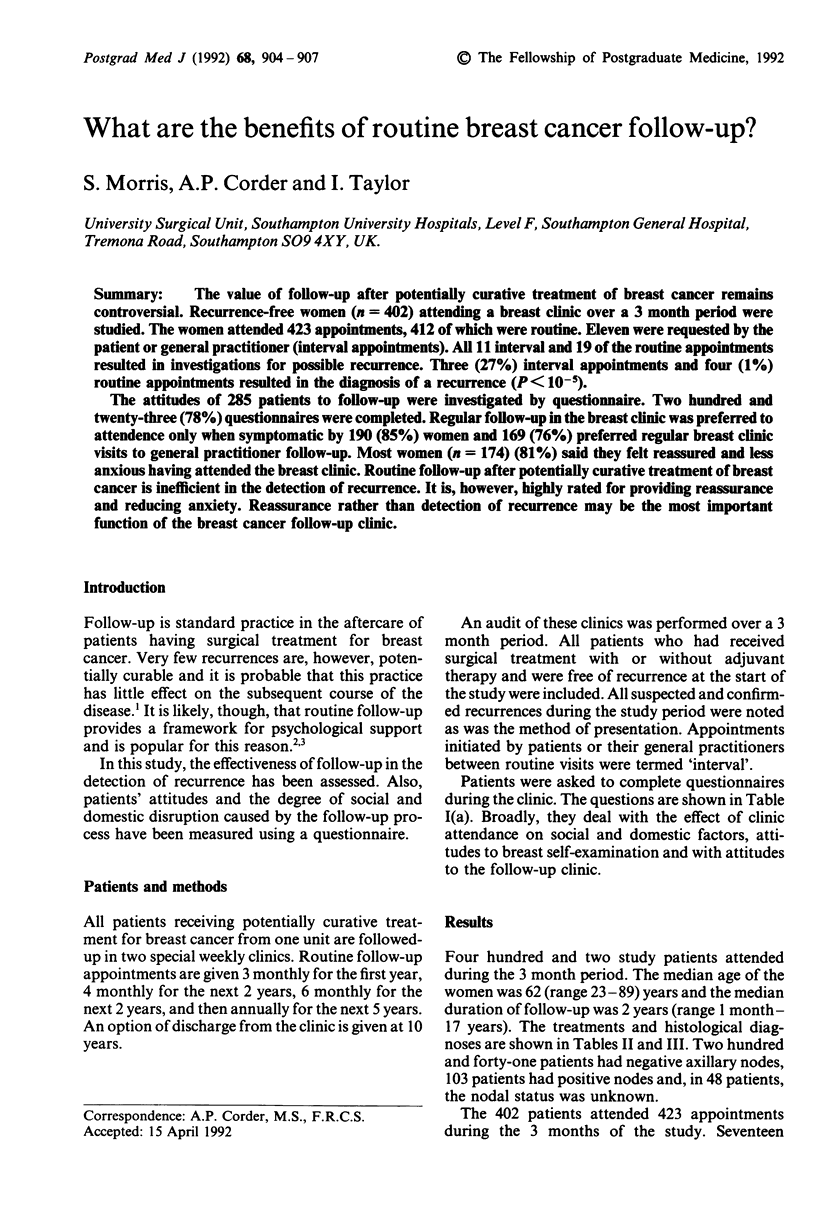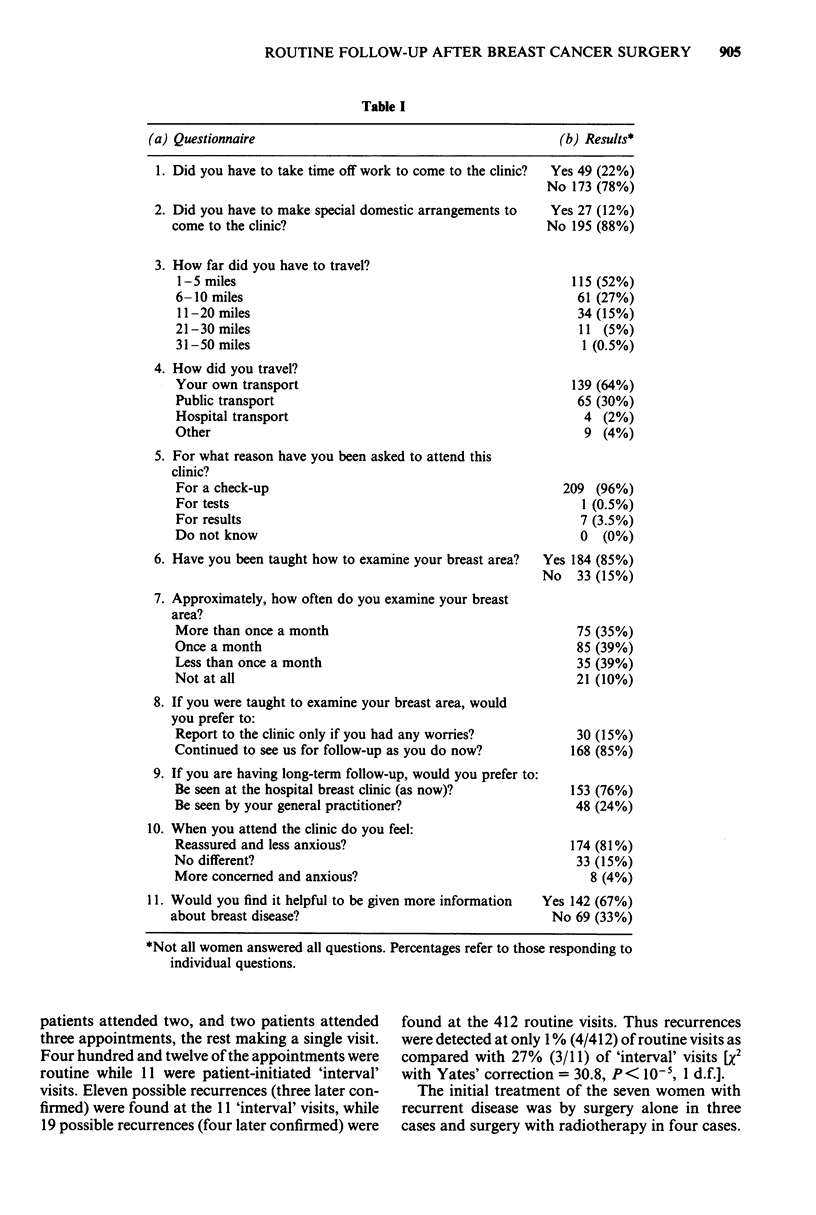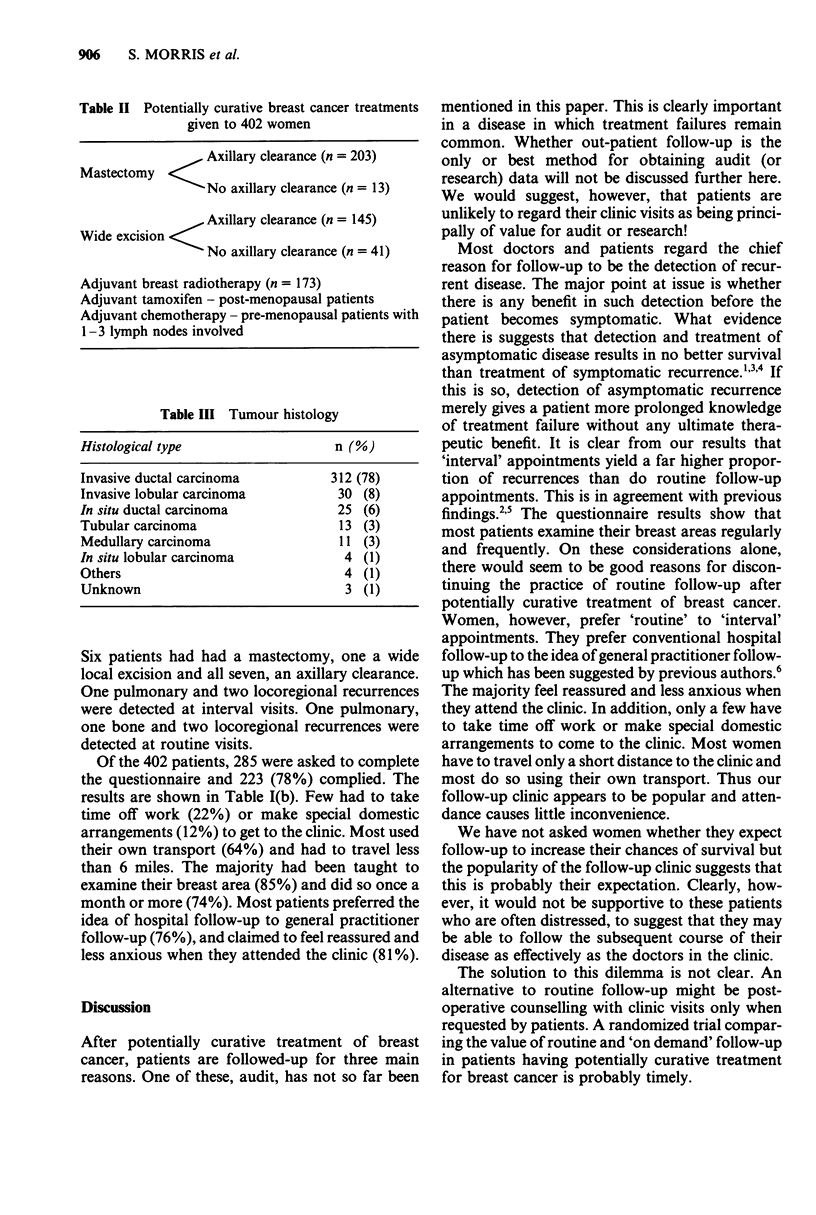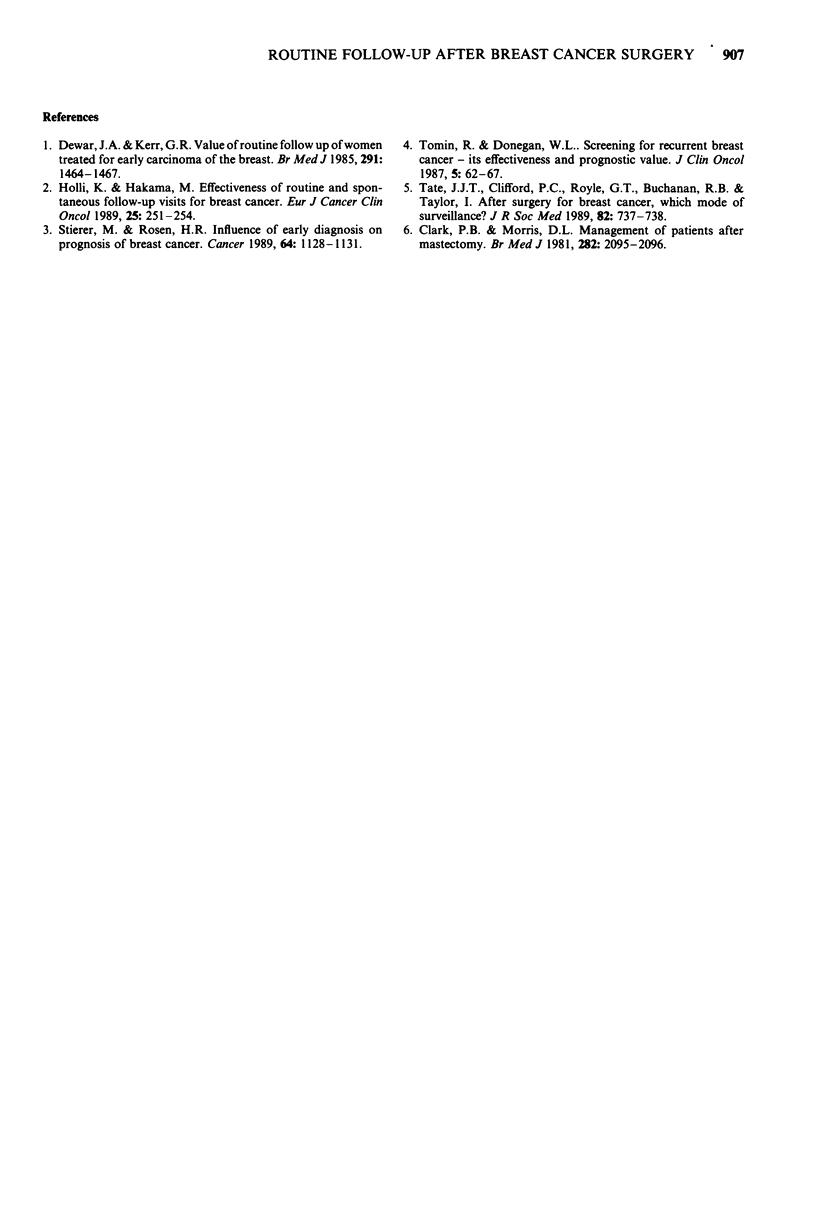Abstract
The value of follow-up after potentially curative treatment of breast cancer remains controversial. Recurrence-free women (n = 402) attending a breast clinic over a 3 month period were studied. The women attended 423 appointments, 412 of which were routine. Eleven were requested by the patient or general practitioner (interval appointments). All 11 interval and 19 of the routine appointments resulted in investigations for possible recurrence. Three (27%) interval appointments and four (1%) routine appointments resulted in the diagnosis of a recurrence (P < 10(-5). The attitudes of 285 patients to follow-up were investigated by questionnaire. Two hundred and twenty-three (78%) questionnaires were completed. Regular follow-up in the breast clinic was preferred to attendance only when symptomatic by 190 (85%) women and 169 (76%) preferred regular breast clinic visits to general practitioner follow-up. Most women (n = 174) (81%) said they felt reassured and less anxious having attended the breast clinic. Routine follow-up after potentially curative treatment of breast cancer is inefficient in the detection of recurrence. It is, however, highly rated for providing reassurance and reducing anxiety. Reassurance rather than detection of recurrence may be the most important function of the breast cancer follow-up clinic.
Full text
PDF



Selected References
These references are in PubMed. This may not be the complete list of references from this article.
- Clark P. B., Morris D. L. Management of patients after mastectomy. Br Med J (Clin Res Ed) 1981 Jun 27;282(6282):2095–2096. doi: 10.1136/bmj.282.6282.2095-a. [DOI] [PMC free article] [PubMed] [Google Scholar]
- Dewar J. A., Kerr G. R. Value of routine follow up of women treated for early carcinoma of the breast. Br Med J (Clin Res Ed) 1985 Nov 23;291(6507):1464–1467. doi: 10.1136/bmj.291.6507.1464. [DOI] [PMC free article] [PubMed] [Google Scholar]
- Holli K., Hakama M. Effectiveness of routine and spontaneous follow-up visits for breast cancer. Eur J Cancer Clin Oncol. 1989 Feb;25(2):251–254. doi: 10.1016/0277-5379(89)90016-3. [DOI] [PubMed] [Google Scholar]
- Stierer M., Rosen H. R. Influence of early diagnosis on prognosis of recurrent breast cancer. Cancer. 1989 Sep 1;64(5):1128–1131. doi: 10.1002/1097-0142(19890901)64:5<1128::aid-cncr2820640527>3.0.co;2-h. [DOI] [PubMed] [Google Scholar]
- Tate J. J., Clifford P. C., Royle G. T., Buchanan R. B., Taylor I. After surgery for breast cancer: which mode of surveillance? J R Soc Med. 1989 Dec;82(12):737–738. doi: 10.1177/014107688908201212. [DOI] [PMC free article] [PubMed] [Google Scholar]
- Tomin R., Donegan W. L. Screening for recurrent breast cancer--its effectiveness and prognostic value. J Clin Oncol. 1987 Jan;5(1):62–67. doi: 10.1200/JCO.1987.5.1.62. [DOI] [PubMed] [Google Scholar]


